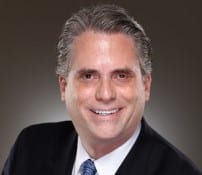Gen Z and millennial employees rely on the physicians in emergency rooms and urgent care facilities as their de facto primary care doctors when they’re sick, injured or their mental wellbeing is suffering, new research from professional services company Marsh McLennan Agency shows. And experts say this may be driving up health insurance costs for employees and employers.
Marla McLaughlin, associate chief medical officer at apree health, an integrated health network, notes that urgent care and emergency room visits come with “significantly higher” out-of-pocket costs for employees. And since claims costs for employers are, in part, connected to the venue of care, that could also be driving up employer costs.
For example, through advanced primary care networks—where employers contract with PCPs for a per-member, per-month (PMPM) rate—an in-office visit and testing for a urinary tract infection would be included in the PMPM, with no additional charge to the employer. But if that employee goes to urgent care or an emergency room for the same issue, employers will incur additional costs, McLaughlin says.
Monte Masten, chief medical officer at Marsh McLennan Agency, notes the full impact on employer costs is difficult to determine, given it’s largely driven by varied benefits design—including co-pays and co-insurance—as well as negotiated fee schedules with an employer’s insurance carrier.
However, experts say that people professionals can look at this challenge as an opportunity to help their organization reduce cost risks and improve employee health. Gen Z and millennials have the highest rate of urgent care and emergency room visits—compared to Baby Boomers and Gen X employees—and they also have the lowest rate of preventive care and primary care physician visits, according to the Marsh McLennan report. However, experts say that HR can leverage benefits design and communication strategies to help younger workers develop better relationships with a PCP, ultimately saving both employees and the employer money in the long run.
How to steer Gen Z and millennials to primary care doctors
Here are four ways employers can nudge Gen Z and millennial employees toward primary care physicians and preventive care instead of urgent care and emergency room visits.
Turn to telemedicine
Masten says telemedicine can effectively reduce per-visit costs associated with non-critical urgent care and emergency room usage among Gen Z and millennial employees. They suggest ensuring telemedicine visits are covered by the company’s health insurance plans and clearly and consistently communicating this to employees.
Gen Z employees are accustomed to convenience, something urgent care centers and hospitals capitalize on, advertising their low wait times on highway billboards, in particular, McLaughlin says. To counter that, HR can emphasize the ease and access of telemedicine, including the fact that doctors are often available to “see” patients at work or home during regular and non-business hours.
“We’ve seen a lot of increase in telemedicine in the younger generations,” says Masten. “They have grown up with this technology, and are more used to that and find it more available for their needs.”
Promote whole-person health

Many younger employees value a “whole person” approach to work, where colleagues view them beyond their job description. HR may want to take a similar approach when promoting the virtues of a primary care physician. Consider leading educational workshops during open enrollment, for example, and periodically sending emails discussing the holistic benefits of seeing a PCP.
For instance, McLaughlin says one health episode could be part of a developing pattern or a sign of something more chronic. Siloed urgent care and ER visits often miss these patterns that PCPs may spot, she adds.
“If there is a healthcare issue, people want a quick and convenient resolution, understandably,” McLaughlin says. “They are likely unaware of the value of having a primary care provider look at the whole picture [and person].”
Work with a primary care solutions provider
HR and benefits teams can contract with an advanced primary care partner, which allows for coordinated care. For instance, the partner team can help employees schedule same-day or future appointments with physicians, nurse practitioners, physician assistants, and specialists in its network. It can also ensure follow-up appointments are scheduled and send reminders to patients if they forget to pick up their medication ordered by a doctor. Advanced primary care partners will coordinate an overarching care plan for the patient, leveraging data and analytics from technology solutions.
McLaughlin says primary care partners arrange to meet employees’ medical and wellness needs, even after normal business hours, by triaging care. They can offer short-term assistance through a phone call with an advice nurse or a virtual behavioral health provider. They can also introduce employees to potential long-term providers like primary care physicians.
HR leaders can also work with their advanced primary care partners to teach their workforce about the value of primary care, McLaughlin says. She adds that education can include incentives to establish engagement and improve understanding of the primary care services offered.
Crunch ER data with your health insurance carrier

Masten suggests asking your health insurance carrier to study the data for patterns in avoidable ER claims. Consider evening visits to emergency rooms for a child’s earache, for example. If these are common, ask the carrier why employees don’t have access to a pediatric office open at night.
“When people come off their work shift, they can take their kid to their pediatric doctor and not the emergency room,” he says.
Provide additional PTO
Employers facing high costs from unnecessary urgent care or ER visits may want to expand their PTO to cover preventive care visits to primary care physicians specifically, Masten suggests.
“We’ve seen some employers who have done this sort of thing, where they’ve given time off to get a preventative health care visit done,” Masten says. “It hasn’t been a seismic move towards a lot of employers doing this, but we have seen some.”

